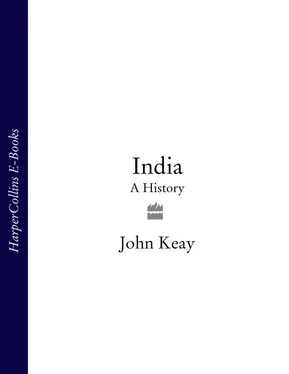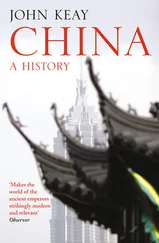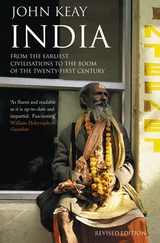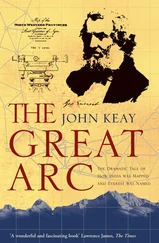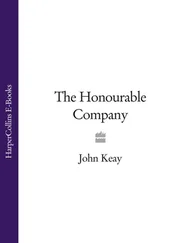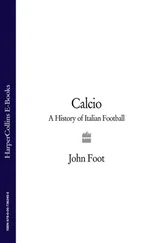Given the vast spread of the Indo-Aryan languages, an Aryan homeland was soon being sought somewhere in the middle of the Eurasian landmass. Most scholars favoured the steppes of southern Russia and the Ukraine, or the shores of the Caspian. Nomadic pastoralists, the Aryans needed plenty of room. Thence, in a series of sweeping migrations spread over many centuries, they supposedly took their language, plus their gods, their horses and their herds, to Iran and Syria, Anatolia and Greece, eastern Europe and northern India.
India’s Aryans were therefore originally immigrants, and to judge by their exploits as recorded in the Vedas, highly combative ones. Aided and encouraged by deities like the fire-breathing Agni and the thunderbolt-throwing Indra, the Aryan conquistadors were seen as having hurtled down the passes from Afghanistan to career across the plains of the Panjab. Dealing death and destruction from fleets of horse-drawn chariots, they subdued the indigenous peoples and appropriated their herds. As dasa or dasyu , these indigenes or aborigines were characterised as dark, flat-nosed, uncouth, incomprehensible and generally inferior. The Aryans, on the other hand, were finer-featured, fairer, taller, favoured above others in the excellence of their gods, their horses and their ritual magic, and altogether a very superior people.
Nineteenth-century British colonialists, reflecting on this new and unexpected Aryan dimension to India’s history, could draw great comfort. All that was fine and ‘classical’ in ancient India’s history could now be credited to this influx of manly heroes from the west. The Aryans, spreading their superior culture right down the valley of the Ganga and then deep into the peninsula, had conferred on India an unprecedented cultural integrity and an enviably high degree of civilisation. In time, however, the purity of the Aryan race had become hopelessly diluted; manliness, creativity and drive had succumbed to the enervating effects of an intolerable climate and an insidious social system. Hence no serious resistance had been offered either to the thrust of Islam or to the advent of the colonial powers. India had slumped into seemingly irredeemable decadence and degeneracy. Then, in the nick of time, out of the west came the British. No less fair, no less manly and no less confident of their superiority, they were the neo-Aryans, galvanising a naturally lax people into endeavour and industry, showering them with the incomparable benefits of a superior civilisation and a humane religion, and ushering in a new and golden age. Or so some liked to think.
This illusion was rudely shattered in the 1930s. Just when Indian demands for self-government were obliging the British to reconsider their colonial mission, the Aryan thesis became both discredited by Nazi propaganda in Europe and challenged by the archaeological reports coming from Mohenjo-daro and elsewhere in India. Initially, with the chronology even vaguer than now, it was not clear that the Harappans pre-dated the Aryan ‘invasions’. Indeed, there are still some scholars who insist that it was the Aryans who preceded the Harappans and, despite ample testimony to the contrary, that the Harappan civilisation was therefore an Aryan achievement. This means pushing the first Aryan ‘invasions’ back to the fourth or fifth millennium BC, which does not square with that philological stratification, and crediting to cattle-rustling tribesmen a mastery of urban refinement for which there is absolutely no evidence in their copious literature.
Despite the more general belief that the Harappan civilisation came first, the Aryan ‘myth’ was not immediately dumped, even by Harappanists. Thus another theory, championed by Sir Mortimer Wheeler – ‘Mr Indus Valley’ himself – was that, if the Aryans could not possibly have created the Harappan cities, they might have been responsible for destroying them. This, of course, assumed that the Harappan cities had succumbed to conquest. Wheeler cited evidence at both Harappa and Mohenjo-daro of ‘massacres’. Skeletons of men, women and children, some incomplete, one or two with cranial damage, had been found scattered in the streets, presumably struck down where they still lay. There were other suggestions of a hasty evacuation. And in the Vedas Wheeler found numerous references to cities, or rather ‘ pur meaning a “rampart”, “fort”, or “stronghold”’. Moreover Indra, the bellicose and bloodthirsty Mars of the Aryan pantheon, was specifically referred to as ‘the destroyer of forts’, or purandara , he who ‘rends forts as age consumes a garment’. Why, asked Wheeler, would he be so described if there had not been forts to rend? And what were these forts if not the Harappan ‘citadels’? Thus the Late Harappans could now be numbered amongst those dark and wretched dasa over whom the Aryans habitually lorded it; and the mystery of what fate had overtaken their cities was solved. ‘On circumstantial evidence, Indra stands accused,’ declared Wheeler in 1947. 5
Indra stood accused throughout the 1950s, but in 1964 the case against him collapsed. The American George F. Dales took a long, hard look at all those skeletons, and could find only two that might have been massacred where they lay. Most of the others appeared to have been casually interred centuries later, when the ground had risen well above street level. ‘There is no destruction level covering the latest period of the city [Mohenjo-daro], no sign of extensive burning, no bodies of warriors clad in armour and surrounded by the weapons of war, [and] the citadel, the only fortified part of the city, yielded no evidence of a final defence.’ 6There was also no proof that pur meant either a city or a fort. Current placenames like Kanpur, Nagpur and so on preserve the word in exactly that sense, but in the Rig Veda, the earliest of Sanskrit compositions, it seems to have implied little more than a well-fenced village or settlement. Nor is it clear that Aryan chariots and catapults could have made much impression on Harappan walls thirteen metres thick, according to the archaeologists, and every bit as high.
The possibility of some contact between Aryans and Harappans can never, of course, be totally dismissed. As the dates for the Late Harappan phase have been slowly pushed forward to around 1700 BC, the gap, if there is one, between Harappan and Aryan has closed to perhaps a couple of centuries. Across such a timespan, some web of collective memory could well have spread. At Harappa and elsewhere in the Panjab, where the Aryans initially settled, there is some largely ceramic evidence of comparatively sophisticated post-Harappan cultures. They could represent a revival of Harappan skills under some kind of Aryan patronage or stimulus.
In the Vedas there is even mention of ‘Hariyupiya’ as a placename. It could be the Harappan site itself, although most scholars take its context to indicate a river, probably west of the Indus. Finally, there is the intriguing possibility that the word ‘Meluhha’, the name by which the Sumerians apparently designated their Harappan trading partners, eventually resurfaced in Sanskrit as mleccha . The latter was a term of contempt used by the arya to disparage those whom they regarded as non- arya . It thus meant much the same as dasa and dasyu , words which unfortunately predate its appearance. Philologists, however, insist that mleccha cannot possibly be Sanskrit in origin. The reflexive consonants clearly show the word to have been borrowed from some local tongue. Perhaps it was just an onomatopoeic word derived from the uncouth gobbledygook in which, to arya ears, the dasa spoke. But if it was derived from the term by which the dasa peoples described themselves, then coincidence can scarcely deny that the mleccha people must have been the Harappans, or rather the ‘Meluhhans’.
Читать дальше
